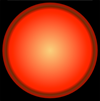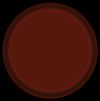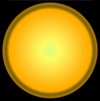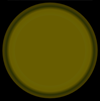Skip over navigation
Here is a machine with four coloured lights. Each light responds to a rule.
When you type in a number, lights go on if their rule is satisfied.
If the number satisfies more than one rule, then more than one colour will light up.
Type in some numbers and see which lights you can switch on.
What is the smallest number which lights up all the lights?



Or search by topic
Number and algebra
Geometry and measure
Probability and statistics
Working mathematically
Advanced mathematics
For younger learners
Light the Lights Again
Age 7 to 11
Challenge Level 





- Problem
- Getting Started
- Student Solutions
- Teachers' Resources
Light the Lights Again
This problem is similar to Light the Lights, but slightly more tricky. You may like to try that one first.
Here is a machine with four coloured lights. Each light responds to a rule.
When you type in a number, lights go on if their rule is satisfied.
If the number satisfies more than one rule, then more than one colour will light up.
Type in some numbers and see which lights you can switch on.
Type in a number 















What is the smallest number which lights up all the lights?
Why do this problem?
This problem requires children to make sense of information and work in a systematic way, thereby modelling the process of scientific enquiry. It is a motivating context in which to use their knowledge of number properties.
Possible approach
This activity will require children to have access to computers or tablets, ideally in pairs.
You could start by dividing the board into two columns, one headed with a tick and the other headed with a cross. Ask learners to suggest numbers, and write each suggestion in the appropriate column according to a rule of your own choice. Make it clear to the class that the activity is designed to model working like a scientist - there is no-one to say whether they have the right answer or
not. So they can come up with a hypothesis for your rule, but you will not confirm their hypothesis, you will only place numbers in the appropriate column.
Here are some suggestions for rules:
- Multiples of 3
- Prime numbers
- One less than a multiple of 10
Once the class has tried the activity with a couple of rules and everyone is reasonably convinced their hypothesis holds, move on to the main task.
To introduce the main task, show the interactivity and demonstrate entering a couple of numbers to see what lights up. Make sure learners understand that more than one light can light up at once, and that each light is governed by its own simple rule. Learners should work in pairs at a computer, and their challenge is to try to light up all the lights.
While the class is working, note any particularly good ways of recording or working systematically, and highlight them to the rest of the class.
Towards the end of the time working on the problem, leave some time for the class to come together to share what they have done. As well as discussing the number that lit up all the lights, encourage children to explain how they approached the problem. What are the four rules that govern the four lights?
Key questions
Which numbers have you tried? What happened?
Which number would be good to try next? Why?
How will you remember which lights each number lights up?
Possible support
Some children might find it helpful to use a hundred square to record their findings. They also might like to try this version of the problem which uses slightly lower-level mathematics.
Possible extension
Some children may want to try a harder version of this problem, Charlie's Delightful Machine.
You may also like
Chocolate
There are three tables in a room with blocks of chocolate on each. Where would be the best place for each child in the class to sit if they came in one at a time?
Four Triangles Puzzle
Cut four triangles from a square as shown in the picture. How many different shapes can you make by fitting the four triangles back together?
Cut it Out
Can you dissect an equilateral triangle into 6 smaller ones? What number of smaller equilateral triangles is it NOT possible to dissect a larger equilateral triangle into?

